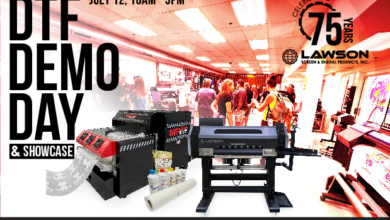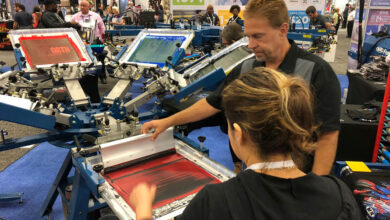Managing Customer Expectations (Screen Printing Edition)
Avoid any miscommunications and prevent customer friction
When we acquire a new client, we sometimes need to explain technical concepts. The need for explanation is essential not only for technical reasons but also to ensure customer satisfaction. Let us not forget the importance of understanding customer needs and wants. It’s critical for decorators if we plan on achieving success. We all want to attract, convert, and retain customers. We must understand our customers’ expectations. So much work goes into winning new clients like initial prospecting, early conversations, strategic program development, budget consideration, and creating deliverables timeline.
Unfortunately, all of that work can come to a screeching halt before the ink cures if we don’t manage expectations. To prevent unnecessary customer friction or problems before they arise, we try to educate our customers. Educating clients on how you operate your business helps mitigate potential issues and retains work. An educated customer is easier to work with than one that is not.
Customers don’t necessarily understand the details within the decorating industry. Explaining it is helpful. As business owners, it’s all about the details. We know our process, the terminology to use, and the reasons behind them. It is second nature to us. But when we’re working with new clients, it’s often easy to forget that garment decorating might be unfamiliar. This disconnect can lead to frustration for the client and us and be detrimental to customer relations. We guard against this by educating our clients before and during the relationship. When we bust out terms like ’emulsion over mesh percentage,’ ‘halation,’ or ‘planar relationships’ on a client, we can get some confused looks. Aside from the details within the process, which may be of no interest to the customer, business people enjoy working with people they respect and like. It goes without saying that we believe that developing a personal relationship builds a stronger business relationship.
Communication, or lack thereof, causes most problems associated with customers. Client relationships will survive if we proactively communicate. Since we provide full package services, we offer advice, direction, input, and counsel to become a valuable partner. This open dialogue helps us establish the respect necessary to ensure a quality project outcome. Some customers are unsure of what they want and may not be good at articulating it. This moment of uncertainty is where we have to try and understand the spirit of the project. Not just what the client says but what he or she may mean. As such, we use intuition and listening skills to identify the key direction they’re communicating. Our ability to manage client expectations hinges on how well we communicate. If we take the time to listen, be proactive about communicating openly, and address issues, we can keep client expectations in check and grow our relationship.
Defining expected outcomes involves aligning the customer’s direction with what we can deliver. We pay attention to the details. Educating our customers indicates that we know what we are doing and sets us up for success by clearly defining the expectations and specifics. We establish the timeline on how long each part of the process takes, particularly for art and press proofs where we wait for client approvals. By defining a timeline, we alleviate pressure for final delivery. Open dialogue is the key to success. Making adjustments is part of the game. We have a schedule but are always prepared to juggle it based on customer needs and deadlines. We remain accountable for our mistakes. We have to own it when it is on us. Being open and honest will facilitate discussion when the client makes a mistake. Make it right! Defining limitations and boundaries is essential. We tend to want to be “yes” people, but we must know what we can’t do as well as what we can.
Customer education includes business details such as terms of payment, acceptable misprint rate, replacement policy, dropshipping, and other items. Offering these details sets them at ease, making them feel comfortable enough to ask questions, crucial for a working relationship. At the start of a project, we outline our offerings, business practices, terms of service, communication methods, and timelines. We break down our process and detail what each step looks like to help us avoid any miscommunications, missed deadlines, or confusion. It leads to clear communication and trust. Educating our client about the project’s parameters and setting expectations ensures we are on the same page.
Educating our clients positions us as the professional in the relationship. It demonstrates our qualifications and allows them to see that we know what we are talking about with experience in the field. The client will then feel comfortable taking advice and trusting our judgment when they see us as experts. By educating our customers, we can explain all that goes into our work and affirm pricing. Clients want to know that they’re in good hands.
Educating our customers on the decorating production process is vital to success. Open communication, clear understanding, and established expectations are a good start. Continuously work on clear communication with your clients by looking for opportunities to educate them. You can do this by asking questions every time you interact with a client.





